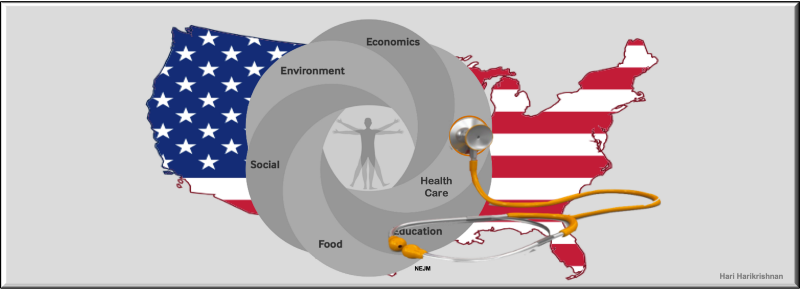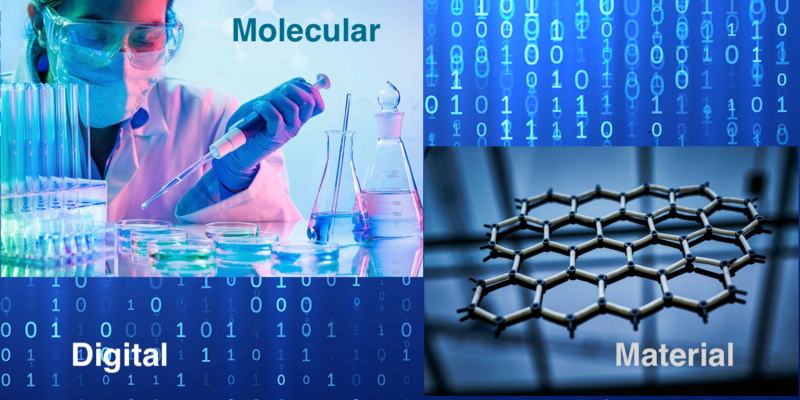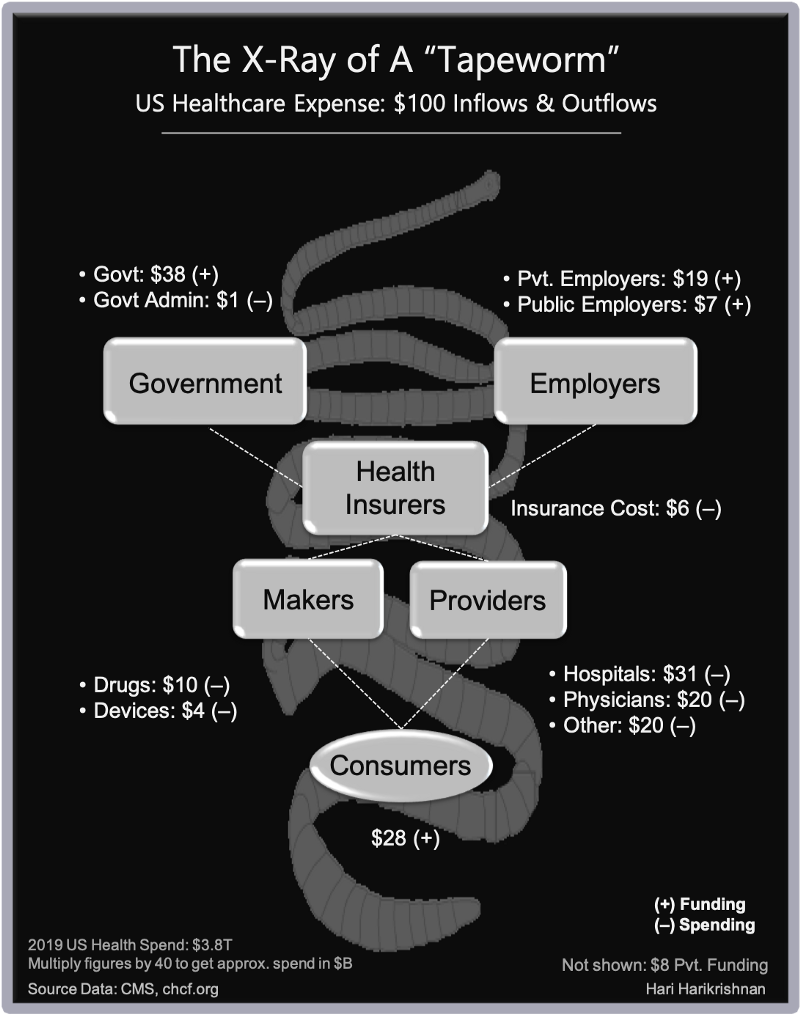IoT isn’t just about improving existing business operations
For years predictive maintenance has been touted as the killer app of IoT; that IoT and predictive analytics is the cure for inefficient machine maintenance and unplanned downtime; that we need industrial IoT to deliver zero-downtime (“ZDT”) and so on.
All that is true. However, new technologies enable us to do more than one simple thing. IoT can be used to:
- Improve existing business operations
- Create new offerings and new business models
Predictive maintenance falls in the first category. I will discuss the second category here, on how new business models can be constructed with IoT.
Business models require thinking through the consumption side of your offer (demand side — how it is bought and used) and the production side of the offer (supply-side — how it is created and delivered). We will look at both.
Changing the Consumption Model
We have evolved from buying a physical book to buying a digital book, to buying a subscription to read books, and finally getting that book read to us. All via a progression of Amazon →Kindle →Echo →Audible offerings. That progression took years of evolution.
How can we do the same in our industrial world? To do that, we need to think of the offer from the consumer’s lens (buyer, user, and operator).
Let us compare how we sell a robot product vs. how a robot is offered as a service. We can then generalize the building blocks of the consumption model for any product.
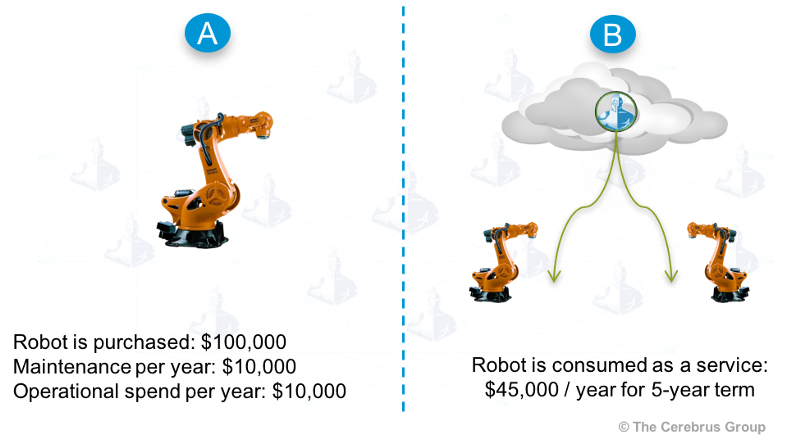
In scenario A, the customer owns the product outright, pays for maintenance to vendor yearly. In addition, they perform their own operations with their personnel.
In scenario B, robot is consumed as a service at a price per year for fixed subscription fee. (The numbers use a weighted average cost of capital, WACC, of 12% to arrive at the equivalent subscription price. The WACC varies by company.)
Thanks to IoT, we can measure the utilization of the robot and charge by utilization, going beyond a simple term subscription. E.g. We can charge by shiftfor a robot used for site-security.
We could have offered better maintenance for scenario A using IoT. That would not have leveraged the power of cloud-connected robots and wouldn’t have charged based on asset utilization. Nor would it have delivered flexible consumption models to customers.
IoT enables us to take a consumption-centric approach to creating new offerings because we can measure consumption.
Can we do this for any product? What are the mechanics of doing this?
Decoding the Dimensions of Consumption
To reimagine your offerings for a connected world, think about dimensions of consumption for your offer, any offer. All from the lens of those who consume the offer.
This picture illustrates the four dimensions:
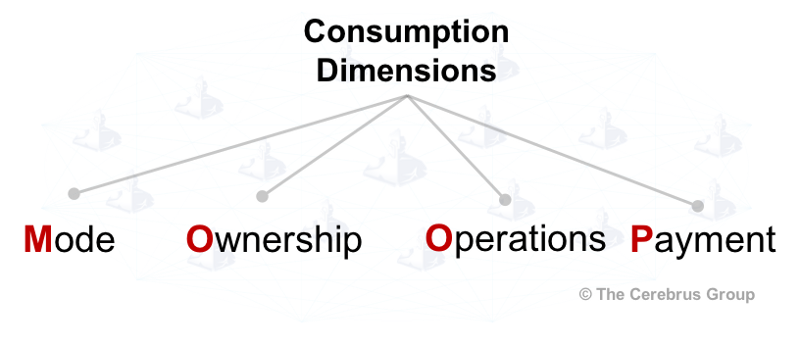
The dimensions convey the following:
- Mode: How the end consumer or user gets your product: does it come in a package; does it come as a service on-demand; does it come digitally; is it delivered as audio etc. Recall how Kindle and Echo changed the way books are consumed or how cloud changed consumption of computing.
- Ownership: Whether customers chose to own your product or buy rights to use when needed. e.g. buy vs. lease or buy vs. as-a-service.
- Operations: Whether customers operated it themselves (“do-it-yourself”) or they get it done using some other party (“chauffer-driven”, vendor-managed, or partner-managed)
- Payment: Did they pay to use each time or subscribe to it for a term?
The simple variations of the M-O-O-P dimensions are as follows:
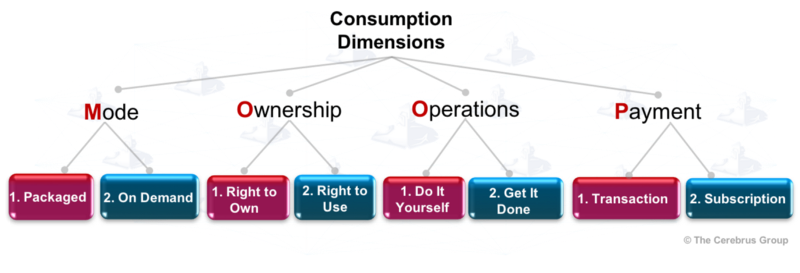
We can mix and match the red-blue tiles above and see how existing offerings in the market leverage these dimensions:
- Leased Car: Mode 1 (Packaged), Ownership 2 (leased for term), Operations 1 (you are driving it), Payment 2 (periodic payments over term). i.e. M1-O2-O1-P2 consumption pattern.
- Connected Robot (for predictive maintenance): M1-O1-O1-P1 pattern. Assumed capex spend and managed by the enterprise owner. As traditional a business model as you can get. Just like car you buy and drive around, it is a product purchase with self-maintenance.
- Lyft: M2-O2-O2-P1 consumption pattern. Service available on-demand. Consumers are charged per ride. At this level of abstraction, not that different from traditional taxi.
- Cloud computing: M2-O2-O2-P1 pattern. Assuming it’s pay-as-you-use pricing for Infrastructure-as-a-service (IaaS). A typical offering from AWS.
- Robot as a service: M2-O2-O2-P2 pattern. Robot on-demand, available as a subscription, priced by year just like a SaaS offer from Salesforce.
…and so on and so forth for any product you analyze. This pattern of transformation is an easy key to re-vector your offer to become consumption-friendly.
Flipping tiles above from red to blue changes the demand-side of your business.
We can drill down below each of the eight tiles above and create variations depending on your product or service. e.g. on-demand could mean consumption on-tap, by voice, click, or an API; transaction pricing could be per activity, per device, per API and so on.
Having looked at the demand side of the business model, let’s discuss the supply-side (production-side) of your business, to complete the business model picture.
Changing the Production-Model
How do you take a $100 robot that costs $20 per year to operate and turn it in to a $45 per year service for five years? There are two ways to deliver this offer to the customer:
- The robot maker does the entire tile-flipping exercise from traditional product sale to creating the as-a-service offer, price, and delivery model. OR
- GTM partners do some of the offer transformation across the M-O-O-P dimensions. e.g. a managed services partner can perform the operations, not the robot maker. (See this article on IoT GTM for details on channel strategy for IoT)
If you, as a maker, decide to deliver the whole offer or components of the offer you will need to configure your development and delivery. Several choices exist across:
- Hardware development: Contract manufacturing to ODM (original design manufacturing) to white labelling choices.
- Software development and operations (Dev through Ops): How much do you build inside vs. have partners build and operate for you?
- Service delivery: What SLAs to offer? How to configure service delivery optimally across tiers of services?
All this can be done using a combination of resources inside your company and inbound ecosystem partners such as your OEM partners or outsourcing partners. Your cost structure and profitability depend on effective supply-side orchestration.
Summary: Killer Business Models, Not Killer Apps
Last week I came across a robotics startup that offers a site-security solution based on robots (like a monthly subscription to ADT or Brinks for home security in the US). It was a reminder that it is not killer apps that are coming, but killer business models and killer solutions.
IoT enables us to rethink our offers and business models, not just improve existing business operations. Time to go beyond predictive maintenance and reimagine our offerings with IoT. Time to flip some tiles!
Originally published at iotforall.com


